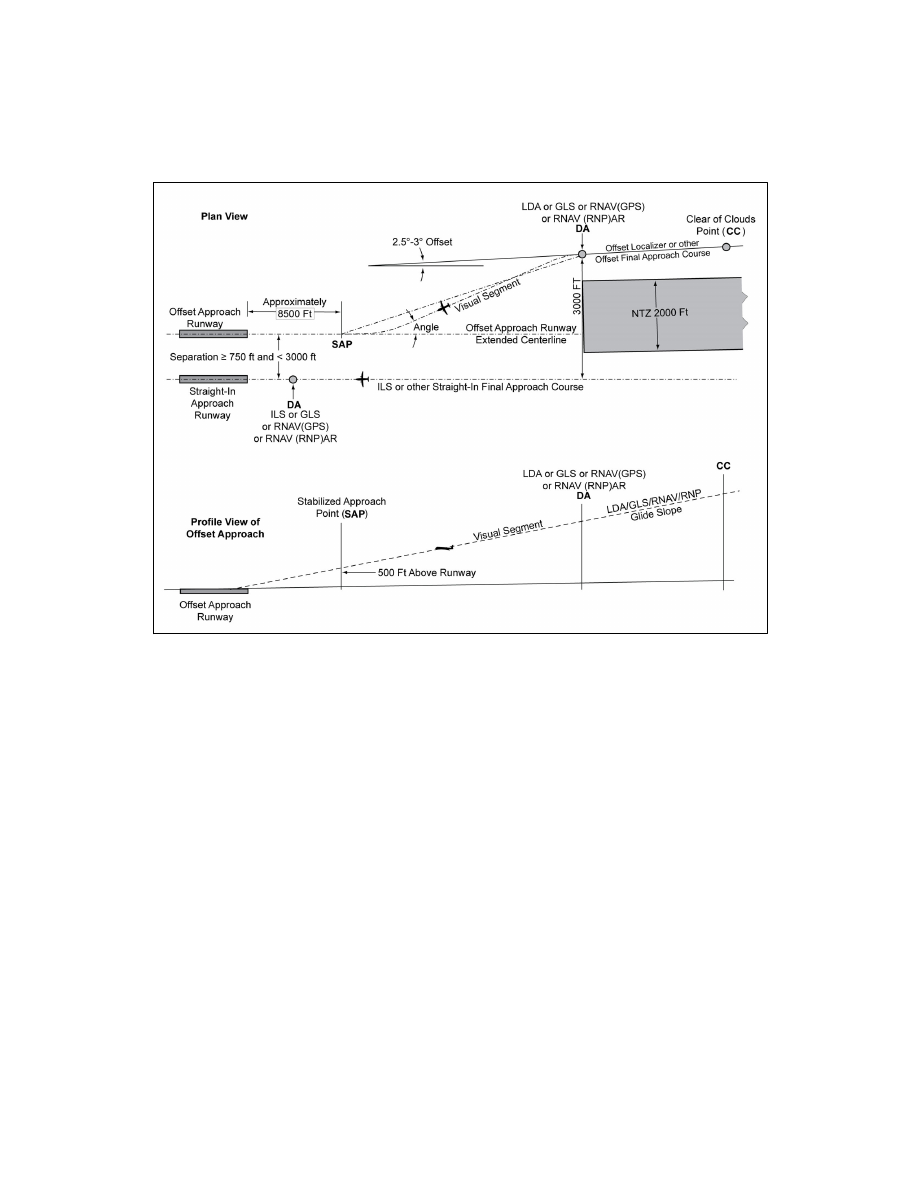
4/20/23
AIM
FIG 5
−
4
−
25
SOIA Approach Geometry
NOTE
−
SAP
The stabilized approach point is a design point along the extended centerline of the intended land-
ing runway on the glide slope/glide path at 500 feet above the runway threshold elevation. It is
used to verify a sufficient distance is provided for the visual maneuver after the offset course ap-
proach DA to permit the pilots to conform to approved, stabilized approach criteria. The SAP is
not published on the IAP.
Offset
The point along the LDA, or other offset course, where the course separation with the adjacent
Course DA
ILS, or other straight-in course, reaches the minimum distance permitted to conduct closely
spaced approaches. Typically that minimum distance will be 3,000 feet without the use of high
update radar; with high update radar, course separation of less than 3,000 ft may be used when
validated by a safety study. The altitude of the glide slope/glide path at that point determines the
offset course approach decision altitude and is where the NTZ terminates. Maneuvering inside
the DA is done in visual conditions.
Visual
Angle, as determined by the SOIA design tool, formed by the extension of the straight segment
Segment
of the calculated flight track (between the offset course MAP/DA and the SAP) and the extended
Angle
runway centerline. The size of the angle is dependent on the aircraft approach categories (Cat-
egory D or only selected categories/speeds) that are authorized to use the offset course approach
and the spacing between the runways.
Visibility
Distance from the offset course approach DA to runway threshold in statute mile
.
Arrival Procedures
5
−
4
−
51